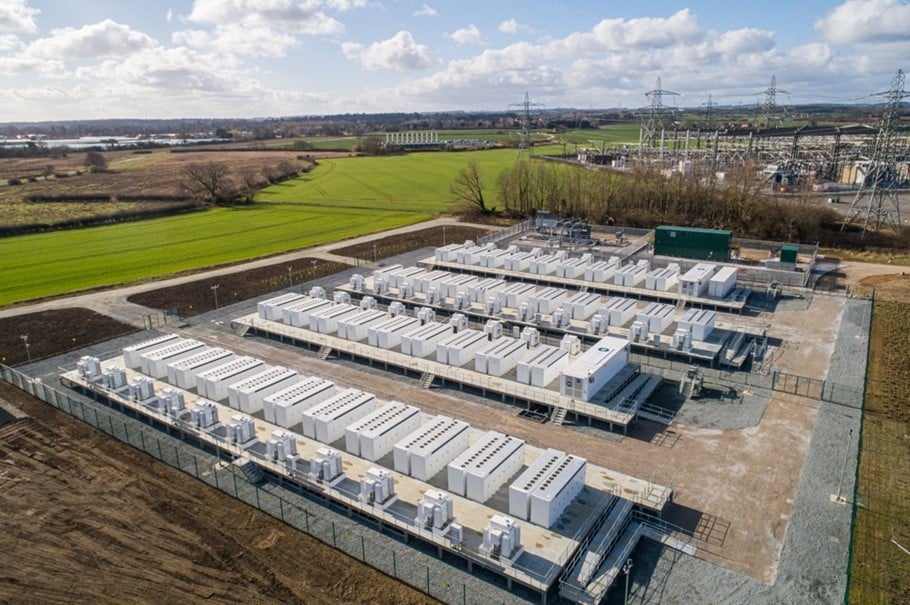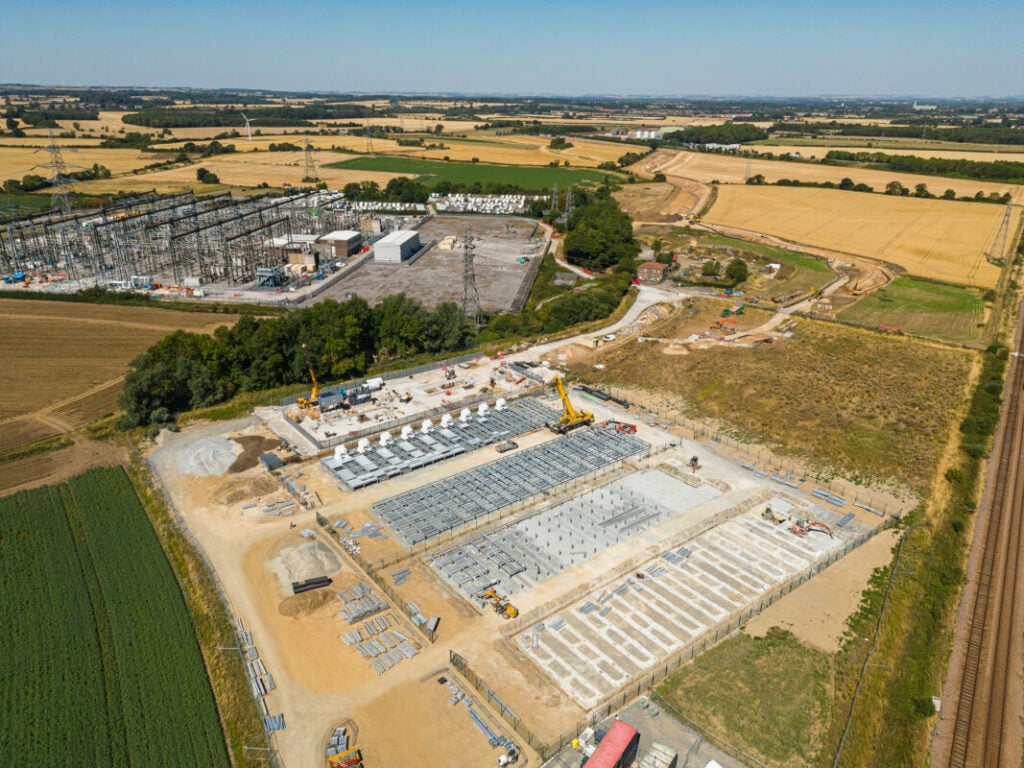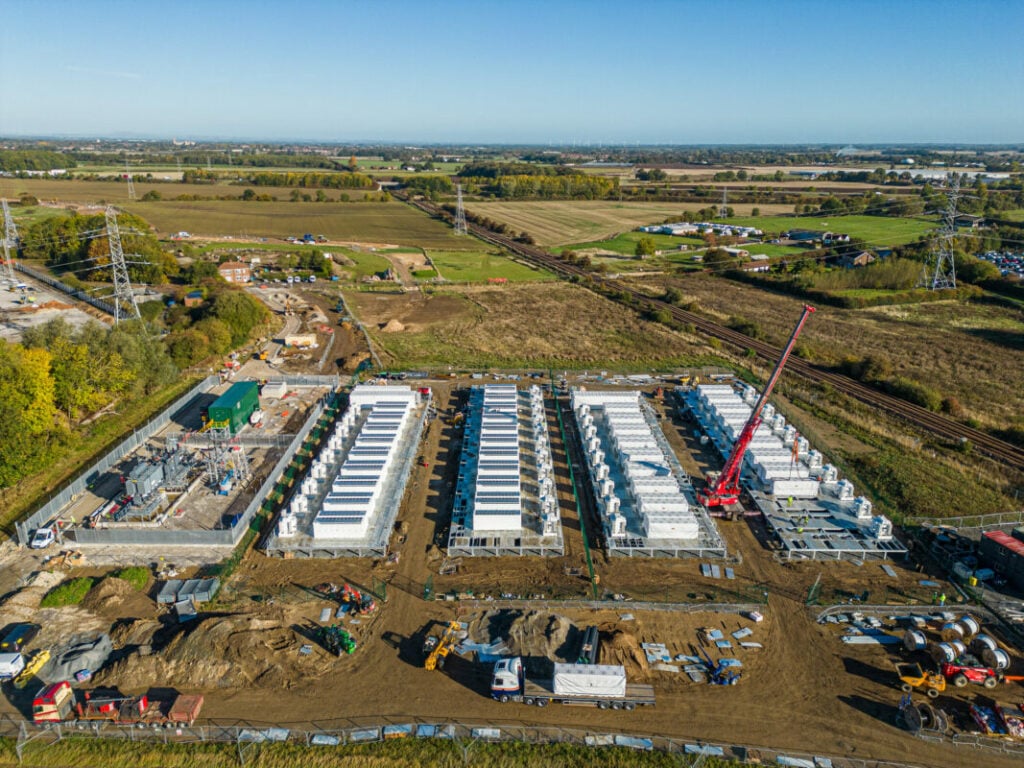
Alex Thornton, operations director at Harmony Energy, gives us a deep dive into Pillswood, the biggest battery storage project in Europe, including the bold decision to be an early-mover into 2-hour lithium-ion BESS, in a market of much shorter duration assets.
This is an extract of a feature which appeared in Vol.35 of PV Tech Power, Solar Media’s quarterly technical journal for the downstream solar industry. Every edition includes ‘Storage & Smart Power,’ a dedicated section contributed by the team at Energy-Storage.news.
Enjoy 12 months of exclusive analysis
- Regular insight and analysis of the industry’s biggest developments
- In-depth interviews with the industry’s leading figures
- Annual digital subscription to the PV Tech Power journal
- Discounts on Solar Media’s portfolio of events, in-person and virtual
Project name: Pillswood BESS
Location: Hull, UK
Capacity: 98MW (196MWh Lithium-ion)
Energisation date: November 2022
Developer/asset owner: Harmony Energy, Harmony Energy Income Trust (HEIT)
Battery technology providers: Tesla
Distribution network operator: Northern Powergrid
Project overview:
The Pillswood Battery Energy Storage System (BESS) near Hull in northern England was officially opened by Harmony Energy and its investment company, Harmony Energy Income Trust, in March 2023.
This 98MW/196 MWh scheme is Europe’s largest by capacity, using a Tesla 2-hour Megapack technology system.
The site is located next to National Grid’s Creyke Beck electricity substation. The world’s largest offshore wind farm, Dogger Bank, also feeds into the same substation, planned to be the connection point for the first two phases of Dogger Bank.
Investigating the potential for energy storage in the UK
The project was conceived in early 2016, when Harmony Energy made a leap of faith into the energy storage sector. As a company, we had a strong belief that the energy storage market in the UK was fundamental to the country’s ambitions to decarbonise. The UK’s target at the time was a commitment to an 80% reduction of greenhouse gas emissions by 2050.
European and UK government policies were driving a reduction in emissions and, in the UK, we were also seeing a reduction in the reliance on centralised coal-fired power stations. With the resulting movement towards wind and solar, we firmly believed that BESS had an increasing role to play in the energy supply of the future.
In 2016, we had already started conversations with Tesla about the potential for 2-hour lithium-ion batteries. Where other UK developers were only speaking about 30 minute or 1-hour duration batteries, we identified that the UK energy system would need longer duration storage as we continued to decarbonise and decentralise generation.
Harmony’s mission statement was clear: develop, build, own and operate energy storage projects at utility-scale with lithium-ion batteries being the product of choice.
The Pillswood project is born
Following the review of the Electricity Distribution Network data, we identified Creyke Beck substation, at Cottingham near Hull, as a potential viable grid connection point for a large-scale BESS. This initial technical analysis including a desktop appraisal of the site, led us to confirm that there was sufficient capacity at this substation to connect a project of this size.
Local Distribution Network Operator (DNO) Northern Powergrid confirmed that there was sufficient capacity and reinforcement on the network for batteries with a combined grid connection of 98MW. The concept of Pillswood was born.
The next stage involved pre-planning consultations with the local planning authority. During this stage, we identified key risks to the project. The main risk being the site’s status as a flood sacrifice zone, used as a floodplain to prevent people’s houses flooding in the event of an extreme weather event. This would necessitate an elevation of the batteries and formed a founding principle of the layout of the project.
The final site design incorporated:
- 78 individual mega pack battery units, manufactured in the United States
- 40 MV/LV transformers, manufactured locally by Wilsons Power Solutions in Leeds
- Two 33kV customer switch rooms supplied by CRT in Italy
- One 1.4km access track
- Over 20,000 m2 site – the size of three football pitches side by side
- A new 132/33kV substation constructed by Northern Powergrid
Forging ahead with construction despite supply chain challenges
Work began in autumn 2021 with the construction of a 1.4km access track, complete with two bridges and two culverts. The track runs across agricultural fields so in order to prepare the ground for the build, the topsoil needed to be stripped, the soil stabilised through the injection of lime to form a hard formation, and then compacted stone was added on top.
In January 2022, we began to prepare the battery site itself, which involved the installation of 478 individual piles, each to a depth of around 15m. These were installed to support the steel frame elevating all of the electrical equipment approximately 1.8m off the ground. Ground beams were inserted to connect the piles, before our specialist construction team began building up the legs of the platforms on which the batteries would sit.

Constructing the scheme to a tight timescale in a challenging geopolitical and global supply chain environment was no mean feat. International shipping issues were affecting lead times, particularly on the electrical equipment which we were reliant on. To reduce the risk of delays on components, we spoke directly with manufacturers and suppliers, often spending days negotiating a multitude of assets, from steel beams to cranes, trucks and staff. The global supply chain was experiencing significant strain as we came out of Covid-19 lockdowns but through effective communication we were able to maintain and develop strong relationships with the supply chain, allowing us to mitigate much of the impact.
During the access track construction, we also encountered a number of underground utilities. Safe working practices and bespoke construction strategies were deployed to protect and mitigate any immediate or future impact on the in-situ utilities.
An exciting future ahead for battery storage

Looking to the future, the whole globe needs to come together collectively to support developments like these if we want to enable clean energy generation and to protect the future of our planet. The Pillswood BESS project is the first of eight similar battery energy storage schemes scheduled for delivery by HEIT in the coming year. Harmony also has plans to replicate its UK success in continental Europe to address the urgent need to deploy significant volumes of BESS to support the deployment of intermittent renewable energy generation.
In the medium to long-term, we see the technology moving towards longer duration batteries. With the growth of solar and wind, battery energy storage sites will be even more important for a sustainable future.
This is an extract of a feature which appeared in Vol.35 of PV Tech Power, Solar Media’s quarterly technical journal for the downstream solar industry. Every edition includes ‘Storage & Smart Power,’ a dedicated section contributed by the team at Energy-Storage.news.
About the Author
Alex Thornton has over 15 years’ experience building and managing fast-growing businesses in the renewables energy sector. As operations director at Harmony Energy, a developer, owner and operator of utility-scale battery storage projects, Thornton
manages and supports its project development, delivery and asset management teams. He also oversees the build-out of Harmony’s battery energy storage systems. He works closely with Tesla, Balance of Plant contractors, DNOs and local stakeholders at all stages of project delivery. Harmony Energy is currently focused on developing projects in the UK, France and New Zealand.

